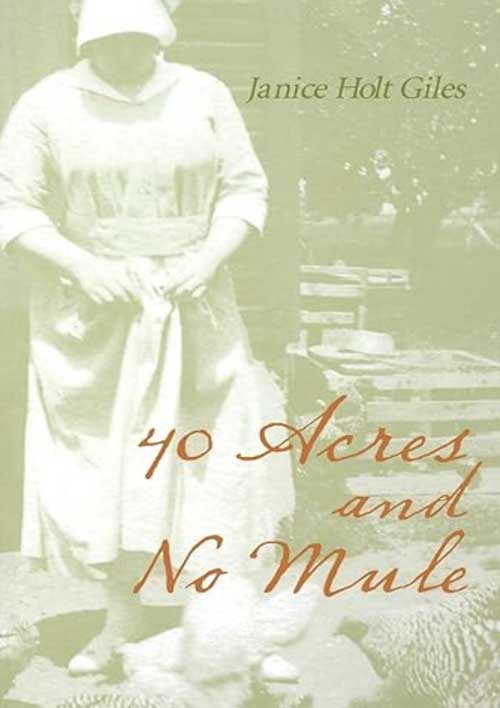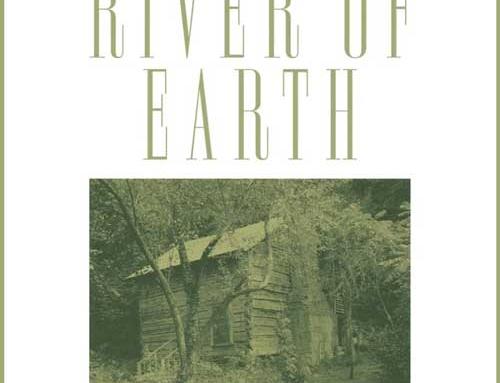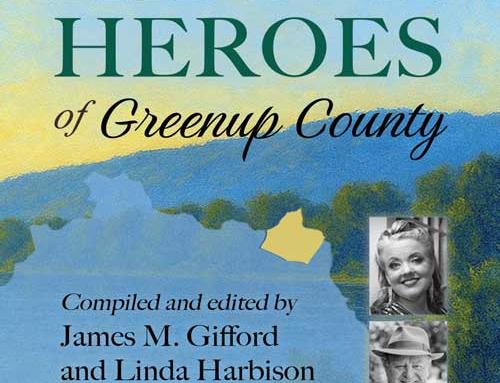Janice Holt Giles (1909-79) was a prolific and successful writer of historical fiction and autobiographical non-fiction. She was born in Arkansas, the second of four children of educators John Albert Holt and Lucy Elizabeth McGraw Holt. She didn’t begin her first novel until 1946, when she was 41 years old, and did not finish it until four years later.
 She met an Army sergeant, Henry Giles, on a bus ride in 1943. They corresponded during World War II and were married in 1945, immediately after Henry was discharged from the Army. They lived in Louisville for four years.
She met an Army sergeant, Henry Giles, on a bus ride in 1943. They corresponded during World War II and were married in 1945, immediately after Henry was discharged from the Army. They lived in Louisville for four years.
In the late 1940s, Janice and Henry Giles moved from Louisville back to the Kentucky hills, where Henry had grown up and where his family had lived since the time of the Revolution. With their savings, the couple bought a ramshackle house and forty acres on a ridge top and set out to be farmers like Henry’s forebears.
Written during the winter of 1950-51, this is the personal account of their first year in the Appalachian hill country. Mrs. Giles, a city woman, soon experienced the trials of settling in the country: farming the barren land, digging a well, building a fireplace, cultivating a vegetable garden, canning on hot summer days, and grading tobacco in the bitter cold. She also came to know and understand the proud, generous people who were her neighbors. In describing these people, she employs the same warmth, humor, and observation that characterize her novels, and she brings to this account a deep appreciation of their old, established ways.
In 1967, when the book was reissued, Janice Holt Giles added a prologue to 40 Acres and No Mule. In it, she relates her experiences to the nation’s view of and interest in Appalachia, comments on her growing understanding of the role of religion and the strength of family ties in the area, and offers conclusions on the character of the region—and how that unique character has been affected by the outside world, particularly through television. “… I did not know Appalachia was unique,” she says of her early years in the hill country. “Having lived most of my life in cities, I thought that the strangeness, uniqueness and differentness I found was only the difference between urban and rural living anywhere. It took years of living withing the framework of an Appalachian family clan…for me to begin to absorb the uniqueness and differentness.”
Enlightening and evocative, personal, and universally pertinent, this description of a year “of backaches, fun, low ebbs and high tides, and above all a year of eminent satisfaction” will be welcomed by Janice Holt Giles’s many readers, old and new.
It is available from the Jesse Stuart Foundation at 4440 13th Street in Ashland. For more information, call 606-326-1667 or email jsf@jsfbooks.com,.
By James M. Gifford, Ph.D.
JSF CEO & Senior Editor
Janice Holt Giles (1909-79) was a prolific and successful writer of historical fiction and autobiographical non-fiction. She was born in Arkansas, the second of four children of educators John Albert Holt and Lucy Elizabeth McGraw Holt. She didn’t begin her first novel until 1946, when she was 41 years old, and did not finish it until four years later.

She met an Army sergeant, Henry Giles, on a bus ride in 1943. They corresponded during World War II and were married in 1945, immediately after Henry was discharged from the Army. They lived in Louisville for four years.
In the late 1940s, Janice and Henry Giles moved from Louisville back to the Kentucky hills, where Henry had grown up and where his family had lived since the time of the Revolution. With their savings, the couple bought a ramshackle house and forty acres on a ridge top and set out to be farmers like Henry’s forebears.
Written during the winter of 1950-51, this is the personal account of their first year in the Appalachian hill country. Mrs. Giles, a city woman, soon experienced the trials of settling in the country: farming the barren land, digging a well, building a fireplace, cultivating a vegetable garden, canning on hot summer days, and grading tobacco in the bitter cold. She also came to know and understand the proud, generous people who were her neighbors. In describing these people, she employs the same warmth, humor, and observation that characterize her novels, and she brings to this account a deep appreciation of their old, established ways.
In 1967, when the book was reissued, Janice Holt Giles added a prologue to 40 Acres and No Mule. In it, she relates her experiences to the nation’s view of and interest in Appalachia, comments on her growing understanding of the role of religion and the strength of family ties in the area, and offers conclusions on the character of the region—and how that unique character has been affected by the outside world, particularly through television. “… I did not know Appalachia was unique,” she says of her early years in the hill country. “Having lived most of my life in cities, I thought that the strangeness, uniqueness and differentness I found was only the difference between urban and rural living anywhere. It took years of living withing the framework of an Appalachian family clan…for me to begin to absorb the uniqueness and differentness.”
Enlightening and evocative, personal, and universally pertinent, this description of a year “of backaches, fun, low ebbs and high tides, and above all a year of eminent satisfaction” will be welcomed by Janice Holt Giles’s many readers, old and new.
It is available from the Jesse Stuart Foundation at 4440 13th Street in Ashland. For more information, call 606-326-1667 or email jsf@jsfbooks.com,.
By James M. Gifford, Ph.D.
JSF CEO & Senior Editor




